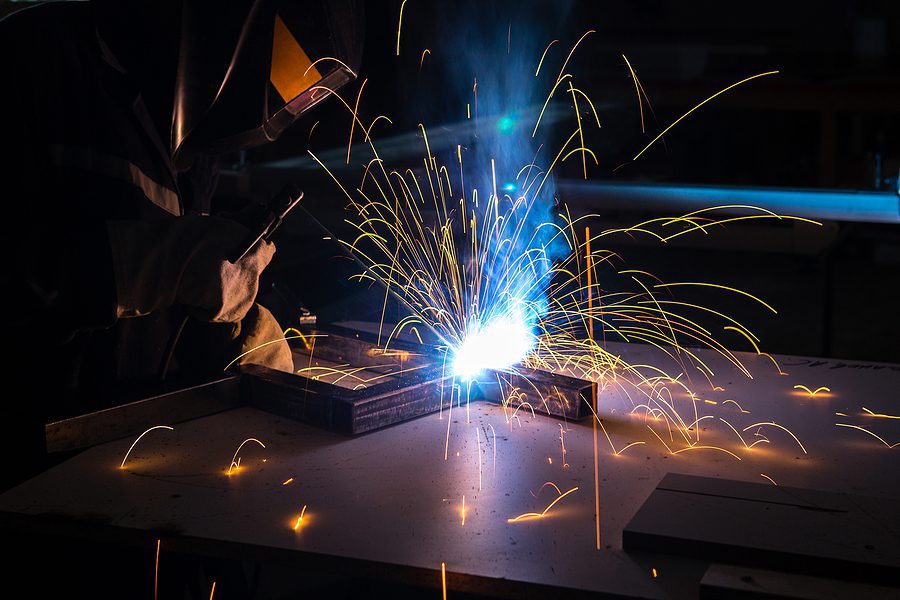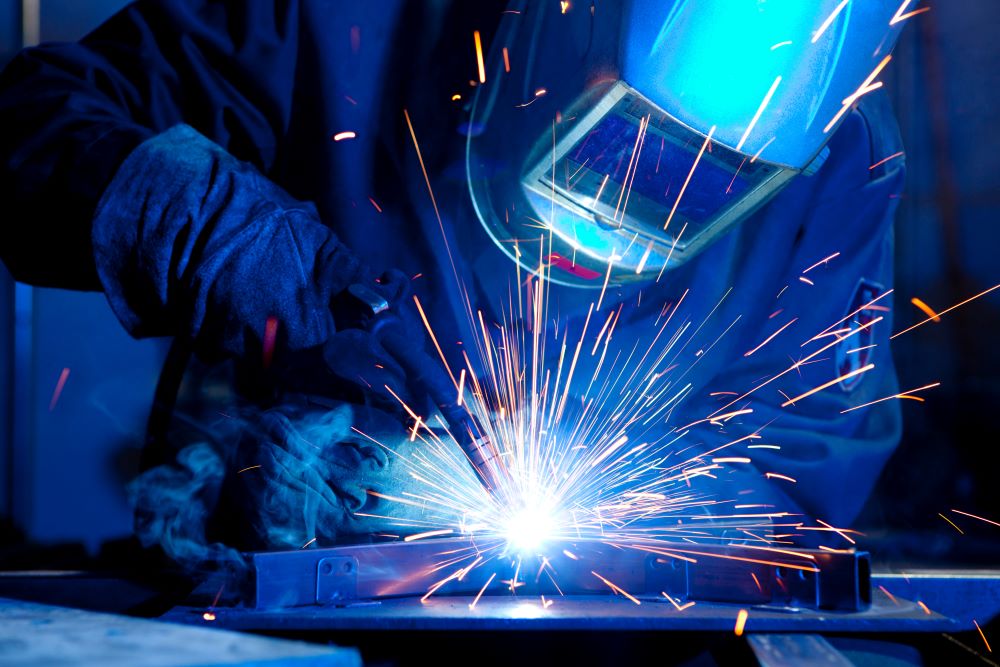A quick guide about overheating prevention from Montana Mobile Welding and Repair
Usual Welding Repair Issues and Just How to Address Them Properly
Welding repair services frequently run into a variety of issues that can threaten the stability of the last product. Typical problems include inadequate infiltration, porosity, and misalignment, to name a few. Each problem provides distinct difficulties that need details methods for resolution. Understanding these problems is essential for welders intending to boost their outcomes and abilities. This discussion will explore these typical welding repair service concerns and effective methods to address them.
Poor Penetration
Insufficient penetration occurs when the weld steel stops working to completely fuse with the base product, causing weak joints and potential architectural failings. This concern frequently originates from not enough warmth input, inaccurate electrode angle, or improper welding speed. Welders might come across insufficient penetration as a result of a miscalculation of the essential specifications for a certain product thickness or kind. Furthermore, contamination on the base product's surface area can hinder effective bonding, intensifying the issue. To resolve insufficient infiltration, welders need to ensure suitable settings on their equipment and preserve a tidy job surface. Normal assessment of welds is advised to recognize any type of shortages early, enabling timely improvements and the prevention of compromised architectural honesty in bonded settings up.
Porosity
Porosity is a typical issue in welded joints that materializes as tiny gas bubbles caught within the weld metal. This problem can endanger the stability of the weld, causing decreased toughness and potential failing under stress. Montana Mobile Welding and Repair Belgrade Welding. Porosity commonly develops from contamination, wetness, or inappropriate welding methods, which permit gases to escape right into the molten weld pool. To resolve porosity, welders must guarantee proper surface preparation, keep a clean workplace, and make use of ideal welding parameters. Additionally, picking the best filler product and protecting gas can alleviate gas entrapment. Routine examination and screening of welds can assist recognize porosity early, guaranteeing prompt restorative actions are taken, therefore preserving the high quality and reliability of the bonded framework
Imbalance
Misalignment in welding can arise from different aspects, including inappropriate arrangement and thermal expansion. Understanding the origin is necessary for reliable resolution. A number of correction methods are offered to straighten components and ensure structural stability.
Reasons of Imbalance
Welding misalignment typically originates from a range of underlying concerns that can endanger architectural honesty. One primary cause is inappropriate fit-up of components before welding, which can cause gaps and irregular surfaces. Variations in thermal expansion throughout the welding procedure can additionally lead to distortion, particularly if the materials being joined have different coefficients of development. Furthermore, inadequate securing and fixturing may stop working to hold elements safely in place, leading to motion during welding. Poorly maintained equipment, consisting of welding equipments and tools, may introduce disparities in the weld bead, further adding to imbalance. Driver error, stemming from insufficient training or experience, can additionally play a significant function in creating misaligned welds.

Improvement Techniques Available
Addressing misalignment successfully needs a mix of restorative methods customized to the certain concerns handy. One typical approach is using fixtures or jigs to hold elements in the proper setting throughout welding, guaranteeing consistent placement. In addition, preheating the products can assist minimize distortion and enhance fit-up. For considerable imbalance, mechanical adjustment methods, such as making use of hydraulic jacks or clamps, can be utilized to fix the position prior to welding. Post-weld warmth treatment may additionally be needed to alleviate stresses brought on by misalignment. Ultimately, cautious inspection and change during the arrangement stage can prevent misalignment problems from coming to be substantial troubles, promoting a smoother welding procedure and improving total architectural honesty.
Distortion
Distortion is an usual challenge in welding that can develop from numerous factors, including irregular cooling and heating. Comprehending the root causes of distortion is important for carrying out efficient avoidance methods. Resolving this issue not just enhances architectural honesty however additionally improves the total top quality of the weld.
Reasons for Distortion
When based on the intense heat of welding, materials commonly undertake adjustments that can result in distortion. This sensation primarily emerges from thermal development and contraction throughout the welding process. As the weld location heats up, the material expands; upon air conditioning, it acquires, which can create inner stresses. On top of that, unequal heating throughout a workpiece can exacerbate these anxieties, leading to warping or flexing. The kind of product likewise plays a substantial duty; metals with varying thermal conductivity and coefficients of expansion may react in a different way, bring about uncertain distortions. Furthermore, bad joint style and poor fixturing can add to misalignment throughout welding, enhancing the probability of distortion. Understanding these causes is important for effective welding repair work and prevention strategies.
Avoidance Techniques
Reliable prevention strategies for distortion during welding emphasis on regulating heat input and making certain proper joint design. Maintaining a regular warm input helps to minimize thermal development and contraction, which can result in distortion. Utilizing strategies such as pre-heating the workpiece can additionally reduce the temperature gradient, advertising consistent home heating. Furthermore, choosing suitable joint designs, such as T-joints or lap joints, can boost security and decrease stress and anxiety focus. Executing correct fixturing to protect the workpieces in position further aids in maintaining positioning during the welding procedure. Staggered welding sequences can disperse warmth more evenly, avoiding localized distortion. By applying these approaches, welders can considerably reduce the probability of distortion and enhance the general high quality of their welds.
Splitting
Breaking is a typical problem experienced in welding repair services, frequently arising from different variables such as incorrect cooling rates, material option, or inadequate joint preparation. The incident of splits can considerably jeopardize the integrity of the weld, causing prospective failings throughout operation. To resolve this issue, welders should first examine the source, making certain that materials work and appropriately chosen for the certain application. In addition, regulating the cooling rate during the welding procedure is necessary; fast air conditioning can generate stress and anxiety and lead to breaking. Correct joint design and prep work likewise add to lessening the risk. Carrying out these strategies can enhance weld high quality and durability, eventually lowering the probability of fracturing in completed weldments.

Insufficient Fusion
A substantial issue in welding repair work is insufficient fusion, which takes place when the weld metal does not sufficiently bond with the base material or previous weld passes - Welding. This issue can bring about weaknesses in the joint, possibly compromising the honesty of the welded framework. Factors adding to incomplete combination consist of inadequate warm input, incorrect welding strategy, and contamination of the surfaces being joined. To resolve this problem efficiently, welders ought to ensure appropriate pre-weld cleaning and his comment is here surface area prep work, in addition to change their welding criteria to accomplish sufficient infiltration and blend. Normal evaluation during the welding procedure can additionally aid recognize incomplete blend early, enabling timely rehabilitative actions to improve the total top quality of the weld
Overheating
While welding repair work can improve architectural stability, overheating offers a considerable difficulty that can bring about product destruction. Excessive heat during welding can modify the mechanical buildings of metals, resulting in lowered stamina, enhanced brittleness, and warping. This sensation is especially crucial in high-stress Our site applications where architectural reliability is vital. Determining getting too hot can involve aesthetic assessments for staining or distortion, along with keeping an eye on temperature during the welding process. To mitigate the threats related to overheating, welders need to employ proper strategies, such as managing warmth input, changing traveling rate, and using suitable filler products. In addition, implementing pre- and post-weld heat treatments can assist bring back material homes and enhance the total top quality of the fixing, guaranteeing long-lasting performance and safety.
Often Asked Inquiries
What Are the Usual Signs of a Welding Issue?

How Can I Check My Welds for Top quality?
To evaluate welds for quality, one can make use of visual inspections, ultrasonic screening, and radiographic techniques. Each strategy ensures architectural integrity, recognizes issues, and validates adherence to specified standards, ultimately boosting the reliability of the bonded joints.
What Safety and security Safety Measures Should I Take While Welding?
When welding, one ought to prioritize safety by wearing proper individual protective equipment, guaranteeing proper air flow, safeguarding flammable products away, maintaining a clean workspace, and knowing environments to stop mishaps and injuries.
Can I Fix a Weld Without Renovating the Entire Joint?
Fixing a weld without redesigning the entire joint is feasible, depending upon the damage (Belgrade). Techniques such as grinding, adding filler product, or utilizing a welding procedure can efficiently address certain imperfections while protecting the surrounding framework
What Devices Are Vital for Efficient Welding Repair Works?
Crucial tools for reliable welding repair work consist of a welding machine, cable brush, mill, protective equipment, clamps, and filler materials. Each device plays a crucial duty in ensuring high quality and safety during the fixing procedure. Porosity typically occurs from contamination, wetness, or improper welding methods, which allow gases to run away right into the molten weld pool. Inadequately kept devices, consisting of welding devices and devices, may introduce disparities in the weld bead, additional contributing to imbalance. When subjected to the extreme heat of welding, materials typically undertake modifications that can lead to distortion. Breaking is a common issue experienced in welding fixings, frequently resulting from various elements such as improper air conditioning prices, product option, or inadequate joint preparation. that site A considerable issue in welding repairs is insufficient blend, which takes place when the weld metal does not adequately bond with the base product or previous weld passes.